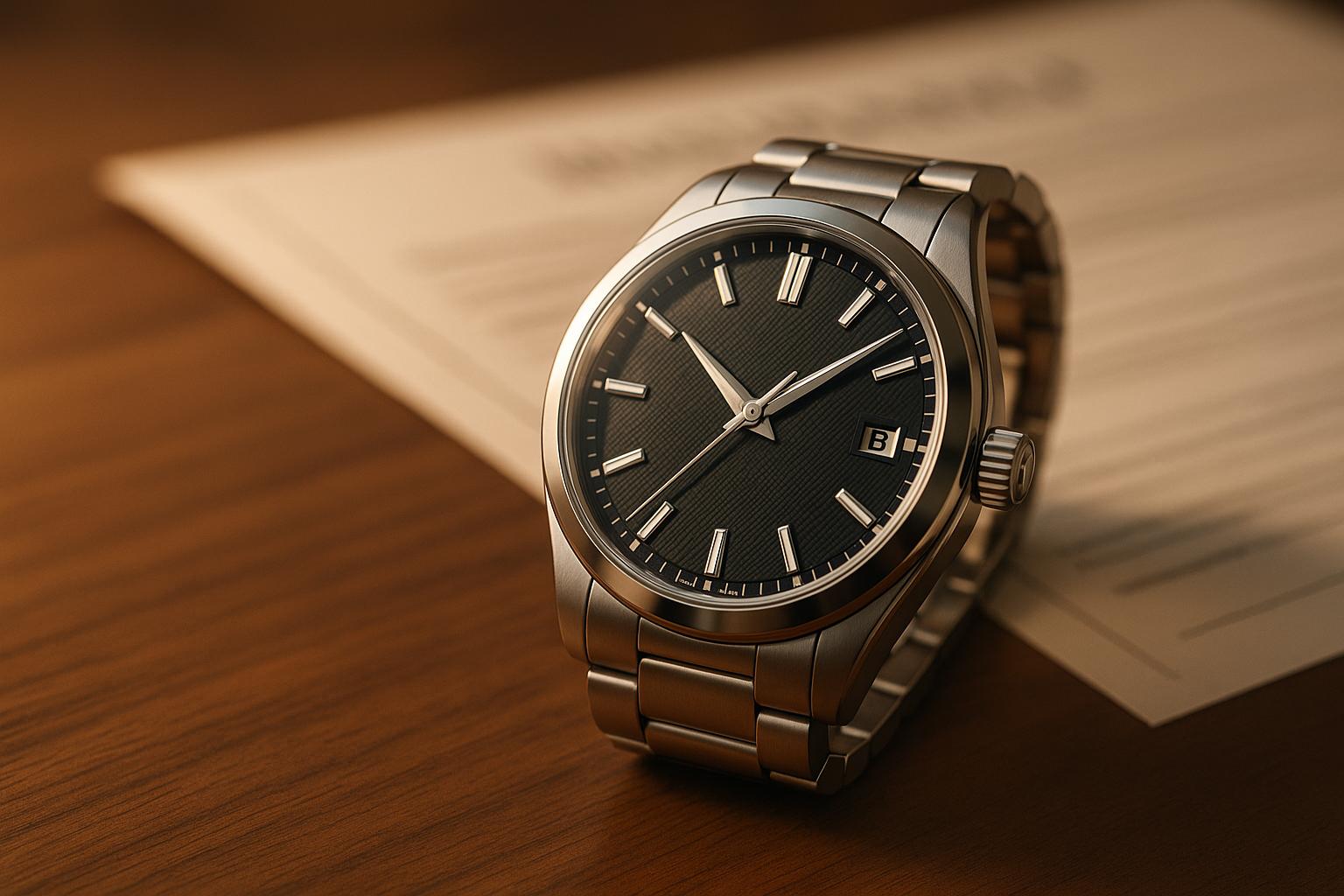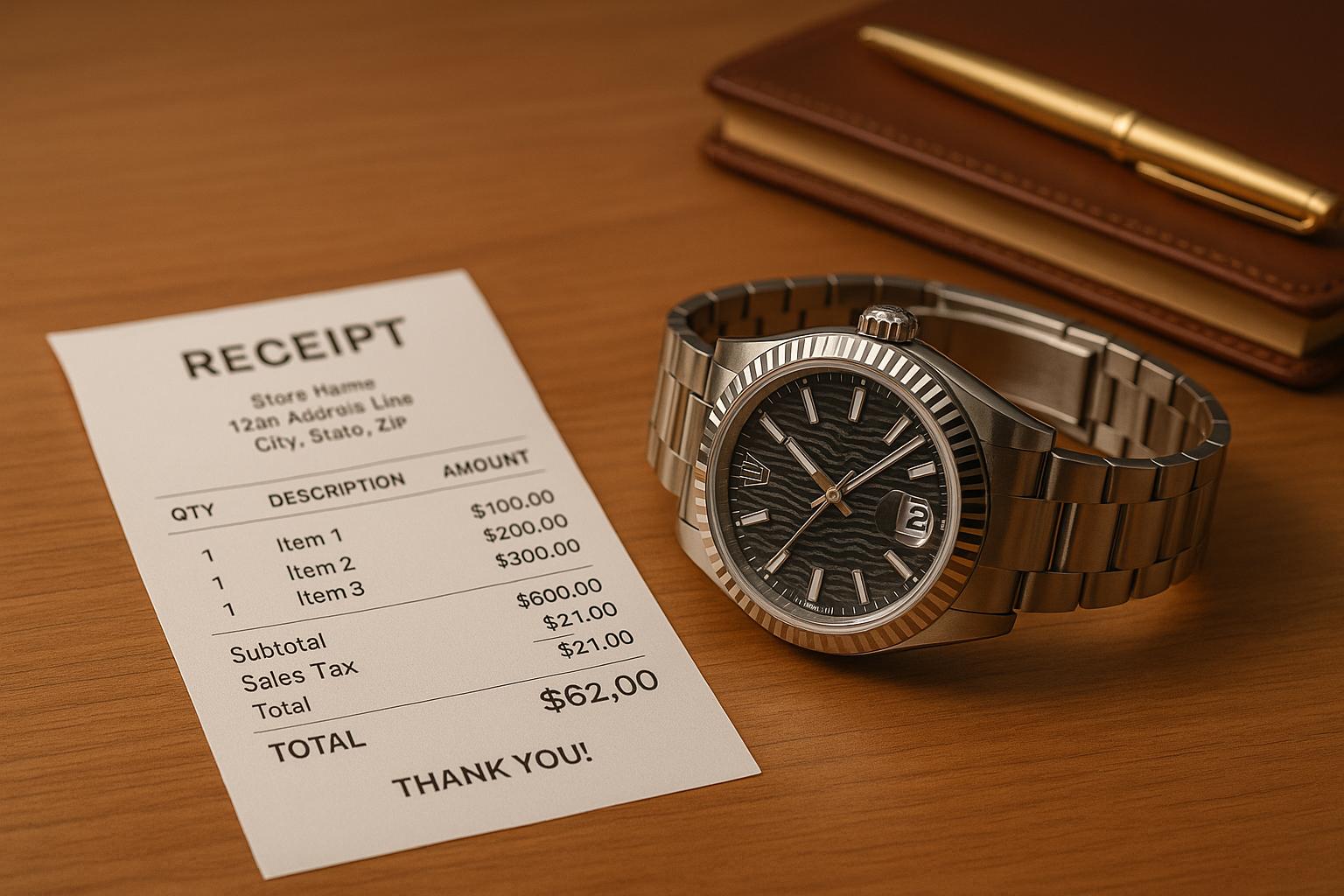Dealing with a denied watch insurance claim can feel overwhelming, but understanding the common reasons and how to respond can save you time and stress. Here’s what you need to know:
- Top Denial Reasons: Missing paperwork, reporting delays, undisclosed pre-existing damage, or failure to follow policy terms like maintenance requirements.
- Key Documentation: Always keep purchase receipts, photos, maintenance records, and police reports (for theft or vandalism).
- Steps After Denial: Review the denial letter, gather evidence (e.g., appraisals, expert evaluations), and file a formal appeal within the insurer’s deadlines.
- Policy Terms to Watch: Know exclusions (e.g., water resistance limits), deadlines, and maintenance requirements to avoid future denials.
If your claim is rejected, persistence and proper documentation can often turn things around. Always review your policy carefully, meet reporting deadlines, and keep detailed records to strengthen future claims.
Related video from YouTube
Common Reasons for Claim Denials
Knowing why watch insurance claims are denied can help you sidestep common mistakes. Insurance companies closely examine claims, especially for high-value luxury watches.
Top Denial Reasons
Claims are often denied due to incomplete paperwork or delays in reporting. Missing deadlines – sometimes as short as 30 days – can result in automatic denials. Another frequent issue is undisclosed pre-existing damage. To avoid this, make sure to document your watch’s condition thoroughly when you take out a policy and disclose any existing issues [1].
Being aware of these common problems can help you file a more solid claim. Also, understanding the terms of your policy can shed light on why some claims don’t go through.
Policy Terms to Know
Certain terms in watch insurance policies play a big role in determining whether claims are approved. Here are a few that often come into play:
| Term | How It Affects Claims |
|---|---|
| Reasonable Care | Requires evidence that you took steps to protect your watch |
| Exclusions | Lists situations not covered, such as normal wear and tear |
| Water Resistance | Denies claims for damage beyond the watch’s depth rating |
For instance, water damage that exceeds the watch’s depth rating is commonly excluded from coverage [1][2]. While understanding these terms is helpful, having the right documentation is just as important.
Required Documentation
To get your claim approved, you’ll need to provide detailed documentation. Key items include:
- Original purchase receipt showing the date and price
- Recent photos and a clear description of the incident
- Maintenance and service records
- Police reports, if the claim involves theft or vandalism
In cases where liability is questioned, additional proof like repair records or expert evaluations may also be necessary [1][2].
Keeping updated photos of your watch’s condition can save you a lot of trouble when filing a claim. These can serve as essential evidence during the process.
Steps After a Claim Denial
If your claim was denied due to missing paperwork or a misunderstanding of your policy, there are steps you can take to challenge the decision effectively.
First Steps to Take
Carefully review the denial letter to understand why your claim was rejected. Insurance companies are required to explain their decisions clearly. As you prepare to respond, gather all relevant details about your claim, such as:
- Photos showing the watch’s damage or condition
- Email or letter exchanges with the insurance company
- Copies of any documents you submitted
- Notes from phone calls, including representative names and call dates
Reach out to your insurer right away to discuss the denial and clarify any confusing points.
Supporting Evidence Needed
Depending on the reason for the denial, you’ll need specific evidence to back up your case:
| Denial Reason | Supporting Evidence |
|---|---|
| Pre-existing Damage | Reports from a professional inspection |
| Value Dispute | Appraisals or market comparisons |
| Coverage Questions | Policy documents and proof of compliance |
| Timing Issues | Records of the incident date and reporting |
Getting an assessment from a certified watch expert can also strengthen your case [1][2].
When to Get Expert Help
There are times when professional assistance is worth considering:
1. If your claim involves complex policy terms or a high-value item, consult an insurance attorney or expert to better interpret your coverage and build a stronger case.
2. For claims over $5,000 or when the insurer appears to have misinterpreted your policy, professional help can make a difference [1].
"An experienced attorney or licensed public adjuster can be invaluable when challenging a denied claim, especially for high-value losses or suspected bad faith actions." [1][2]
Once you’ve gathered your evidence and consulted experts if necessary, the next step is to formally appeal the denial.
sbb-itb-fcc00bb
How to File an Appeal
Once you’ve gathered evidence and understood why your claim was denied, it’s time to officially appeal the decision. Filing an appeal requires careful preparation and proper documentation to improve your chances of success.
Appeal Process Basics and Writing Your Letter
First, request a formal appeal form from your insurance company. Most insurers require a written appeal that directly addresses the denial reason. Your appeal package should include:
- A completed appeal form
- All claim-related documents, including any new evidence
- The original denial letter
- A detailed appeal letter
When writing your appeal letter, include these key elements:
- Header Information: Add your name, policy number, claim number, and the date of denial.
- Statement of Purpose: Clearly identify the denied claim, state your intent to appeal, and reference specific policy terms that support your case.
- Evidence Presentation: Organize your documentation and explain how each piece addresses the denial reason. Stick to facts and policy language.
Appeal Deadlines
Meeting deadlines is critical when appealing a denial. Insurance companies typically have strict timelines for each stage of the process [1][2].
| Appeal Stage | Typical Timeline | Action Required |
|---|---|---|
| Initial Appeal | 30-60 days | Submit your written appeal with all documents |
| Internal Review | 10-30 days | Insurer reviews and responds to your appeal |
Submit your appeal via certified mail or your insurer’s preferred method, and keep copies of all documents and correspondence [1][2]. Be concise, focus on the denial reasons, and ensure your appeal is well-organized.
If your appeal is denied, knowing your legal options can guide your next steps.
Your Legal Rights
Knowing your legal rights can be a powerful tool when dealing with a denied watch insurance claim. These protections are in place to ensure insurance companies handle claims fairly and provide you with clear options to challenge any denials.
Insurance Laws and State Regulations
Insurance companies are required to process claims fairly and transparently, acting in good faith. Laws like the Unfair Claims Settlement Practices Act are designed to prevent unjust denials by mandating proper investigation and clear justification. However, state-specific regulations also play a big role in how claims are handled. Here’s a breakdown:
| Aspect | State Variation | Impact on Claims |
|---|---|---|
| Response Time | 15-45 days | Insurers must reply within the state’s timeframe |
| Documentation | Varies by state | Proof requirements differ depending on location |
| Appeal Rights | 30-180 days | Deadlines to file appeals vary by state |
For more details, visit your state’s insurance department website to see the specific rules for watch insurance claims in your area [2]. Some states may even provide added consumer protections beyond federal standards.
Making Official Complaints
If you believe your claim was handled unfairly, filing a formal complaint with your state’s insurance department is an option. Be sure to collect all relevant documents, such as your policy, denial letter, and any correspondence with the insurer. Many states offer online systems to make submitting complaints easier. If your case involves a high-value watch or is particularly complex, consulting with an attorney who specializes in insurance law could help [1].
Knowing your rights not only strengthens your position during an appeal but also gives you the confidence to navigate the claims process effectively. In the next section, we’ll look at ways to avoid future claim denials.
Preventing Future Denials
Keeping your claims on track starts with good documentation and a clear grasp of your insurance policy. These steps can help you avoid claim denials down the road.
Tips for Storing Documents
Keep important records in both physical and digital formats. Use a fireproof safe for physical copies and secure cloud storage for digital backups. Here are the key documents to prioritize:
| Document Type | Storage Format | Update Frequency |
|---|---|---|
| Purchase Receipts | Digital + Physical | At purchase |
| Appraisal Reports | Digital + Physical | Every 2-3 years |
| Service Records | Digital | After each service |
| Photos of Watch | Digital | Every six months |
| Insurance Policy | Digital + Physical | Upon renewal |
Policy Review Reminders
Set reminders for these important moments to review your policy:
- Your annual policy renewal date
- After any significant watch servicing
- When adding new watches to your collection
- If your policy undergoes any changes
Pay close attention to coverage limits, exclusions, and any rules about maintenance or storage. Some policies require regular servicing by authorized dealers to stay valid.
These reviews ensure your policy is current and that you’re aware of all its conditions.
Know Your Coverage Inside Out
A solid understanding of your policy is key to keeping your coverage intact. Use a checklist to stay organized, focusing on:
- Maintenance schedules required by the policy
- Approved storage conditions
- Deadlines for reporting incidents
- Documentation needed for claims
For luxury watch owners, platforms like Chronoexpert can offer helpful advice on care and protection, including water resistance testing and servicing schedules.
Make it a habit to schedule maintenance with authorized dealers and keep thorough records of all services. This documentation can be a lifesaver if you ever need to file a claim, showing that you’ve followed all the necessary steps to care for your timepiece.
Conclusion
Dealing with a denied watch insurance claim takes patience and a clear plan. While a denial can feel frustrating, it doesn’t have to be the end of the road – persistence can often turn things around.
The key lies in having solid documentation, fully understanding your policy, and sticking to all deadlines. Keeping detailed records of every interaction with your insurer, including dates and what was discussed, can make a big difference when appealing a decision.
Every conversation with your insurer is an opportunity to improve your approach and strengthen future claims. By staying organized, meeting deadlines, and learning from the process, you can better safeguard your watches and minimize potential problems down the line.


